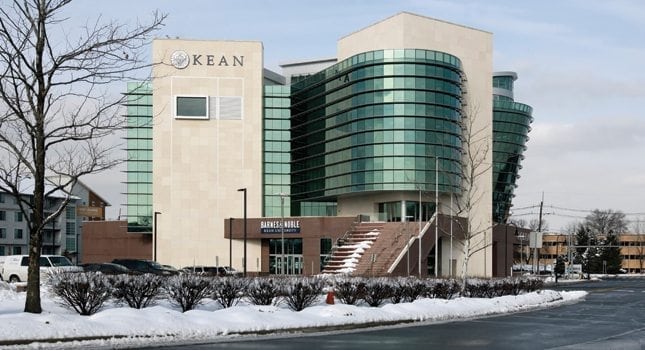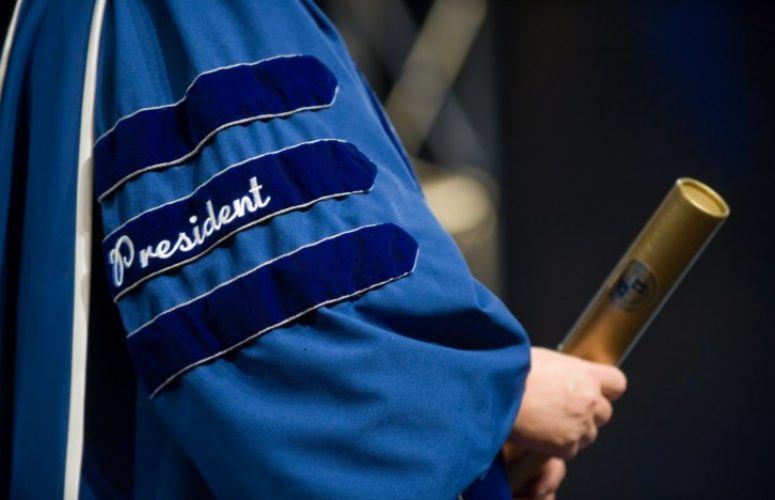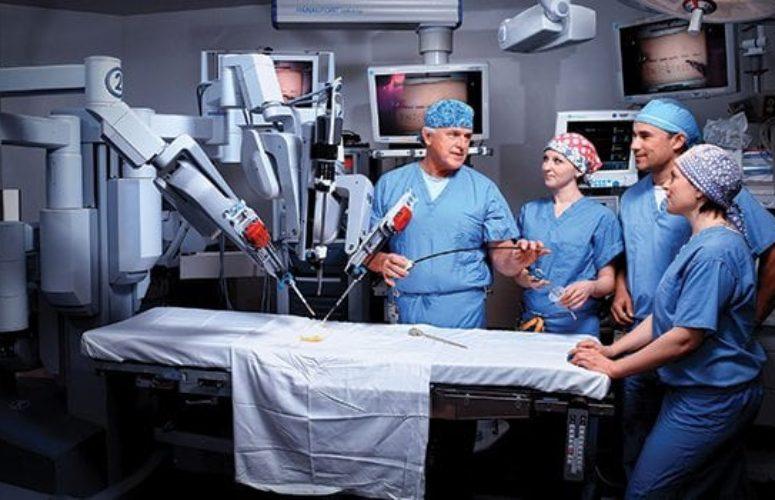
Colleges and Hospitals Experience Construction Boost
The factors and trends behind college and hospital construction expansion in the state.
By Anthony Bucci, Assistant Editor On Apr 4, 2014College and hospital construction in New Jersey is seeing a bigger boost than it has in the past, according to many construction companies and college and hospital advocates in the state. In this article, New Jersey Business covers a multitude of hospital and college construction projects around the state, as well as trends and the benefits these initiatives provide.
Hospital Construction
On the hospital front, Susan Walton, director of project management for the New Jersey Health Care Facilities Financing Authority (NJHFFA), points to the changes in healthcare laws as to why hospitals and healthcare facilities are beginning to plan and carry out new construction, more so than they have in the past few years.
“At the NJHFFA, where we provide not-for-profit healthcare providers with access to low cost capital, we are beginning to experience entities wanting to move forward on what we call new money projects,” she says. “I think that there has been a reluctance for hospitals to get to involved with new construction over the past couple of years because they wanted to see how the Affordable Care Act (ACA) would play out – certainly from 2008 going forward – and what was happening in the interest rate market.”
In 2013, the NJHFFA issued approximately $180 million in bonds to Robert Wood University Hospital in New Brunswick, in which Walton says was one of the only real construction projects it helped finance that year.
The first of the three-phase project includes nine stories of parking with 60,000 square feet of office space, as well as an expansion to the hospital’s power generating capabilities. The second phase includes a vertical expansion, and includes new adult private care beds and new operating rooms. The third phase – which the NJHFFA did not finance – is a plan to expand the hospital’s emergency department, doubling its size from 25,000 square feet to 50,000 square feet.
Walton mentions that in the past few years, the number of new money projects the NJHFFA has dealt with, compared to the number of re-financings on existing space, has experienced a complete 180 degree turnaround.
“It used to be where we completed eight new money construction projects and two re-financings, but it flipped,” she says. “It has been eight re-financings and two new funding projects. But, it is definitely changing back to the former.”
In terms of trends in the hospital and healthcare sector that contribute to construction, Walton mentions that outpatient services – medical procedures that can be done without an overnight stay in a hospital – are becoming more prevalent, as well as upgrades to various patient areas within the hospital.
“A lot of things are being done either on an outpatient basis and quite frankly, out of the hospital completely,” she says. “Additionally, it seems as though hospitals have been focused on keeping their emergency rooms and birth centers up-to-date.”
In response to the increased volume of outpatient procedures happening nationwide, Trinitas Medical Center in Elizabeth recently opened its 9,500-square-foot Ambulatory Surgery Center located in the Andrew H. Campbell Pavilion on the Williamson Street Campus. The $5.2-million facility has three outpatient operating rooms, new equipment and is integrated into the hospital’s existing operating room services.
Englewood Hospital and Medical Center is currently in the process of a $90-million expansion including construction of an 80,000-square-foot, three-story vertical expansion to The Russell and Angelica Berrie Center for Humanistic Care. The project includes a new breast cancer center, two floors of physician exam rooms and office space, a 25,000-square-foot Family Birth Place and various site renovations and upgrades.
William Blanchard, president of Springfield-based WM Blanchard Co., whose company is working on the expansion, says that in terms of construction trends, he see hospitals looking to continuously improve upon the patient experience.
“The conversion of semi-private rooms to private rooms is a large part of what we see happening now,” he says. “Patients no longer want to share space, and hospitals are responding to accommodate that.”
WM Blanchard Co. is also constructing a vertical expansion at Hunterdon Medical Center in Flemington that will add two floors and approximately 46,000-square feet to the top of the hospital’s west wing. It will include 20 new private patient rooms and a new cardiology unit. The project is said to cost upwards of $22 million and will be funded from the hospital’s internal sources and fundraising.
Technology is another ongoing trend in the hospital construction industry. “Certainly, as equipment and healthcare delivery modernizes, there is going to be a consistent flow of change within the healthcare systems and that translates into construction,” Blanchard says. “Hospitals want to stay on the leading edge of medicine.”
And in terms of sustainability, which in the past has been a priority for many institutions in regards to new construction and renovation, Blanchard says that today, “there is less emphasis on it due to the economy. Five years ago, there was a big push for things like LEED® certification, and frankly, I think the focus on that was lost a bit. It is still out there even as the economy is improving, but, as many facilities and systems still struggle with their bottom line, it isn’t as important to them as having the newest machines and medical technology.”
College Construction
Perhaps seeing an even larger boost than what the hospital construction sector has been experiencing is college and university construction, due largely in part to the $750 million “Building Our Future Bond Act” (BOFBA). In August of 2012, Governor Chris Christie signed legislation to place the General Obligation construction bond on the ballot, which New Jersey voters approved. Additionally, the state reauthorized bond proceeds from four other higher education funding programs that include the Higher Education Facilities Trust Fund (HEFT); the Higher Education Capital Improvement Fund (CIF); the Higher Education Technology Infrastructure Fund (HETI); and the Higher Education Equipment Leasing Fund (ELF). Combined with the General Obligation bond, the combined amount of the programs equates to more than $1.3 billion to help with new construction and maintenance of New Jersey’s higher education infrastructure.
“These bond programs are a great investment back into the state of New Jersey,” says Tony Calcado, vice president of facilities and capital planning at Rutgers University. “I think that the governor, Legislature and New Jersey voters were cognizant of the fact that building newer and updated facilities at colleges around the state will pay dividends. It’s about having top-notch facilities that students can learn at, and really, the students are what the future of our state is all about.”
Rutgers currently has approximately $800 million worth of new construction happening at its campuses around the state, part of which the school pays for due to the BOFBA requiring a 25 percent match from all colleges receiving money. Additionally, bond monies only cover academic facilities, and not dormitories, for instance.
On Rutgers’ Busch campus in Piscataway, the 145,000-square-foot Wright Riemen Chemistry and Chemical Biology Building is in the works, with $82 million of the project cost provided by the BOFBA and $33 million contributed by the university. On the University’s Camden campus, construction is set to begin on a $62.5-million 100,000-square-foot Nursing and Science Building, and on the Newark campus, a $59-million 93,000-square-foot expansion to its Life Sciences building will contain chemistry and biology research labs and three teaching labs for upper-level chemistry and biology courses. Also in Newark, Rutgers is rehabilitating and restoring 15 Washington St. in the James Street Commons Historic District, and converting it into apartments that will house approximately 350 students. It is expected to cost $94.8 million, with approximately $57 million of the financing from bonds that will be repaid through rents, $18 million from equity, and $10.7 million from the state Higher Education Facility Trust Fund.
In 2013, Rutgers broke ground on the College Avenue Redevelopment Initiative in collaboration with the New Brunswick Development Corporation, the New Jersey Economic Development Authority, New Brunswick Theological Seminary and Rutgers Hillel. Scheduled to be completed in 2016, the project calls for: a 200,000 square-foot, University Academic Building, a Rutgers Honors College; relocation of the New Brunswick Theological Seminary to a new 30,000-square-foot facility; and university housing and mixed-use space in the form of a 220,000-square-foot, 500-bed apartment-style building in an on-campus setting for Rutgers University students and 15,000 square feet of service retail space.
At Kean University in Union, the school recently opened its Green Lane Building, a 102,275-square-foot, six-story, mixed-use academic building that will include a Barnes & Noble college bookstore on the first floor (scheduled to open later in 2014), classroom and administration space and a conference center and rooftop terrace. Designed by the Gruskin Group, the building will be home to Kean’s Robert Busch School of Design, as well as the university’s expanding business programs.
Construction on a four-story, mixed-use dormitory and retail building at Bloomfield College is currently underway. The 80,434-square-foot building will incorporate ground level retail space including a Barnes & Noble, student housing, housing offices, a college conference center and enclosed parking spaces. The project will cost approximately $22.5 million.
“In the college construction sector, we are starting to see a lot of mixed-use and retail space as well as technology playing a huge role in where new construction is headed,” says Chris Johnson CEO of Parsippany-based construction company Hollister. “Today, there are technologies like Smart Boards, video conferencing capabilities, Wifi and the like. We didn’t see things like that 10 years ago. And the retail aspect is providing jobs and added revenue to the towns and cities in which these colleges are located.”
Hollister recently completed upgrades and expansions to Seton Hall University’s library, as well as infrastructure upgrades. The company also provides work at Fairleigh Dickinson University, where it has “a construction management practice on-site, with anywhere from three to six ‘teammates’ depending upon the workload,” Johnson says.
Michael Klein, executive director of the New Jersey Association of State Colleges and Universities, says New Jersey has been a leading state in the nation in regards to “outmigration” – students leaving New Jersey and going to college elsewhere. Thus, it is a reason why the recent bonds have been “critically important.”
“We can’t continue to lose students to other states and remain competitive,” he says. “There hasn’t been this level of state support for academic buildings in over 25 years, and it will help provide the kind of 21st century education students want and need to fulfill their own futures.”
Klein says colleges and universities around the state have been focusing on using the various bond program monies to construct facilities with an emphasis on science, technology engineering and math (STEM).
Montclair State University (MSU) is building a $55-million, 107,500-square-foot Center for Environmental and Life Sciences that will have “state-of-the-art classrooms and research labs that will provide programs in sustainability science, pharmaceutical biochemistry and medicinal chemistry, as well as environmental management, environmental science, geoscience and geography. MSU received approximately $94-million from the BOFBA, more than any other senior public or private institution (only public research universities received larger amounts).
At Richard Stockton College, a $28.6-million addition to the school’s Unified Science Center will include labs for research, computer labs, a greenhouse, vivarium and faculty offices. Also, the college is building an $18-million classroom building that “will house 24 classrooms, 20 offices and teaching spaces for Schools of Business, Education, Arts and Humanities, Health Sciences and Natural Sciences and Mathematics.
A 39,540-square-foot Science Center at Hudson County Community College in Jersey City is in the works. It will consist of nine laboratories, including a nursing and medical assistants’ lab, nine classrooms and five offices for the science department.
At Middlesex County College, a 22,400-square-foot academic science building will be built for STEM and health sciences programs that will include 14 labs for biology, chemistry and microbiology. It will also have new science labs for Allied Health programs, as well as office space for natural sciences faculty and new equipment.
At Raritan Valley Community College, a 23,500-square-foot addition to the college’s Science Center will be built using $6.9 million from the General Obligation bond. The addition will feature four new labs and classrooms, an engineering lab, several faculty offices and an 80-seat lecture hall.
John Wilson, president of the Association of Independent Colleges and Universities in New Jersey, says the recent effects the bonds have had on New Jersey’s higher education have been a positive sign and adds that the state is moving in the right direction.
“Before the downturn in the economy in 2008, our member schools were spending about $300 million a year on capital construction projects,” he says. “Right now, it is closer to $200 million, and with the infusion of these bond programs, it is helping move things forward.”
Wilson mentions that the state will not only benefit from long-term effects due to the vast majority of college construction that is happening, but the short-term effects are also prevalent.
“An important piece of the puzzle is that not only is the construction an investment in buildings that can serve students for many decades, but it is adding jobs to the New Jersey economy,” he says. “Building new college facilities means jobs in construction, retail and added faculty, for instance. It is like a snowball effect, and I think New Jersey has been doing a great job in helping create opportunities that benefit everyone in the state.”
Conclusion
Although the aforementioned projects are only a small portion of the hundreds of new college and hospital construction jobs that were recently completed, or are happening/will happen, New Jersey is poised to continue to stay competitive and expand and improve with new and updated college and hospital facilities.
Related Articles:





